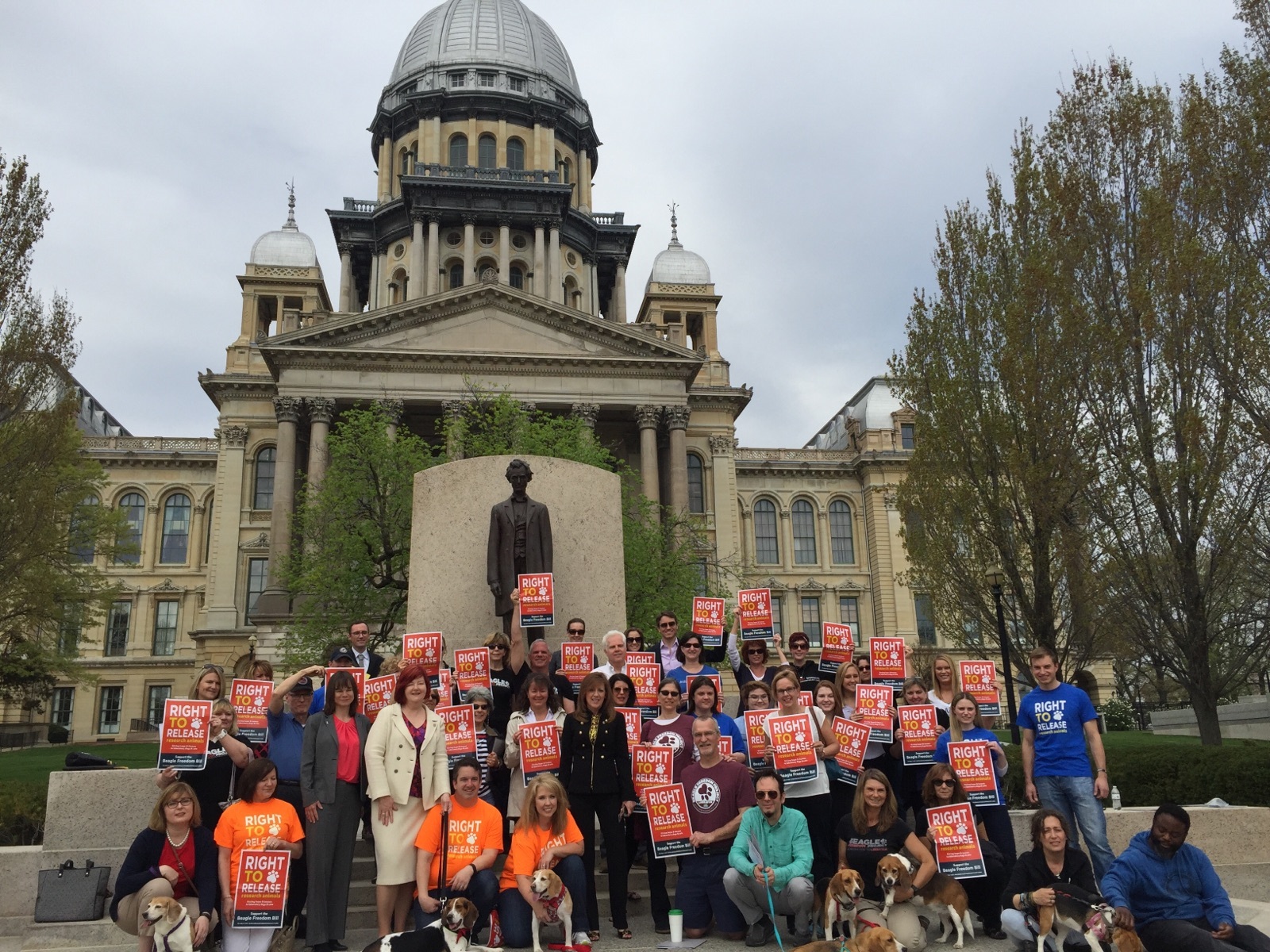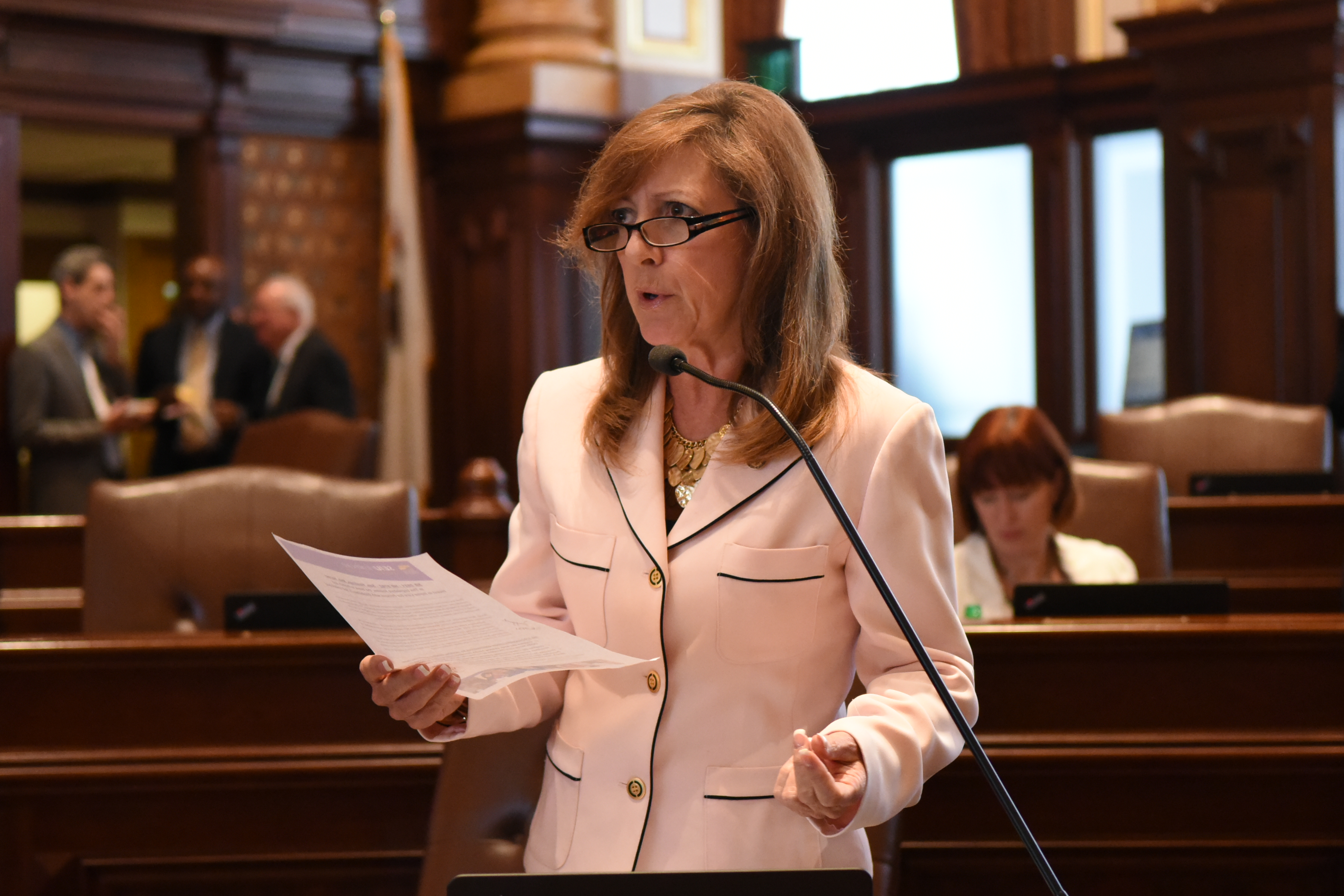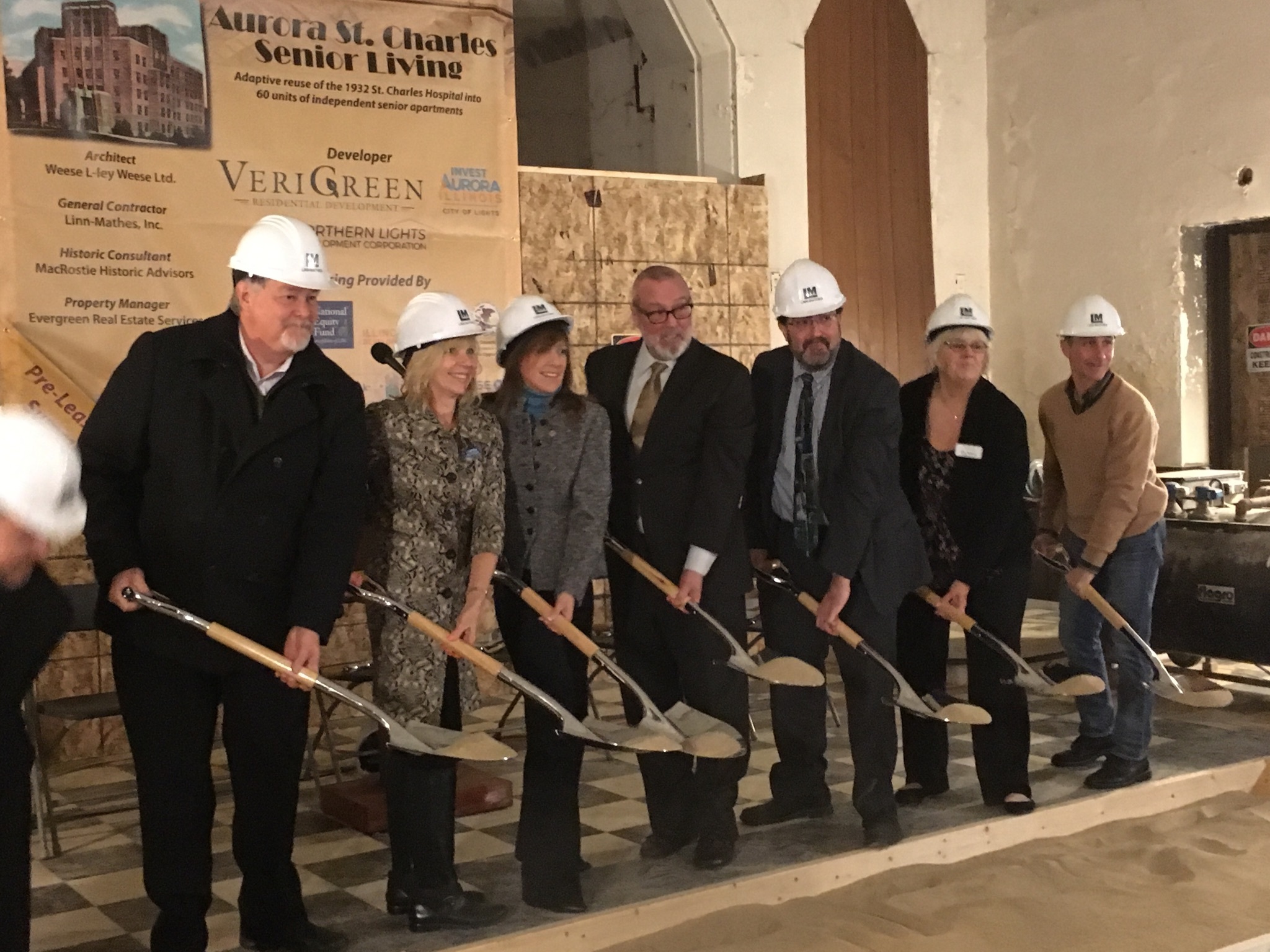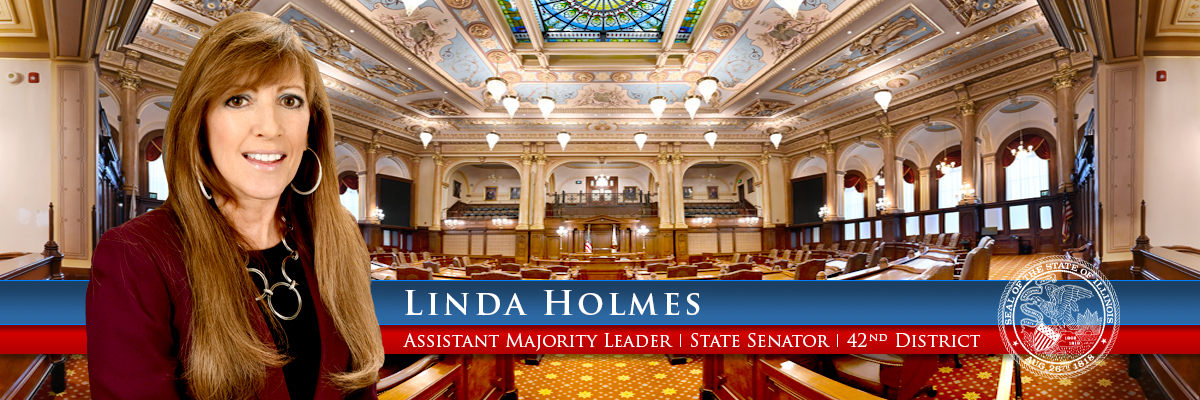- Details
- Category: Latest
 Chicago Tribune - May 23, 2016 | Original article
Chicago Tribune - May 23, 2016 | Original article
By Celeste Bott
What initially seemed like a feel-good animal rescue bill has sparked a fight between the University of Illinois and a lawmaker who says the state's largest public university is deliberately withholding information about its animal research programs.
Under a measure nicknamed "the beagle bill," Sen. Linda Holmes started out wanting to require universities to offer healthy cats and dogs to rescue organizations when they are no longer needed for testing. The Democrat from Aurora, who describes herself as a longtime animal lover and former Humane Society volunteer, argues that since research dogs and cats cost thousands of dollars, taxpayers should be given the chance to adopt the animals.
Beagles are the breed of dogs most commonly used for experiments, and the adoption effort is being pushed by the Beagle Freedom Project, a group that has successfully lobbied for similar legislation in Minnesota, Connecticut, Nevada and California. The idea is to prevent research animals from automatically being euthanized.
But the legislation has stalled after heated debate at a hearing where universities led by the U. of I. said they already have adoption polices in place. As such, several lawmakers questioned weather Holmes' bill was a solution in search of a problem.
- Details
- Category: New Releases
State Sen. Linda Holmes issued the following statement after voting for a measure that would enact automatic voter registration in Illinois.
“Everyone from President Obama down to the citizens who need to stand in line for hours to exercise their rights as American citizens is calling for this,” said Holmes, D-Aurora. “This isn’t complicated: If more people are registered, more people will vote. I urge the House and Governor Rauner to make this the law and strengthen the voice of the people.”
Senate Bill 250 passed the Illinois Senate 42-16. It proceeds to the Illinois House for consideration.
- Details
- Category: New Releases
 Calling on Gov. Bruce Rauner to act quickly to avoid the loss of crucial federal matching funds intended to provide health insurance to children, State Sen. Linda Holmes urged him to sign an extension to the Covering All Kids Health Insurance Act after it passed the Senate 44-12 today.
Calling on Gov. Bruce Rauner to act quickly to avoid the loss of crucial federal matching funds intended to provide health insurance to children, State Sen. Linda Holmes urged him to sign an extension to the Covering All Kids Health Insurance Act after it passed the Senate 44-12 today.
“There’s a reason that All Kids has met with bipartisan support: It’s an important program that’s good for children and families,” Holmes said. “It’s also a program for which the federal government provides matching funding, and that means we risk losing twice the funding for the children who need health care the most if Governor Rauner does not act. I urge him to sign this authorization.”
The program covers an estimated 41,000 children from working poor families, regardless of their immigration status, and is one reason Illinois has the second highest rate of health coverage for Latino children in the nation at 95.5 percent. It constitutes roughly one half of one percent of the state’s health insurance spending while bringing in $40 million in federal matching funds.
The Covering All Kids Health Insurance Act will end July 1 unless Governor Rauner signs House Bill 5736, which would extend the sunset date to October 1, 2019.
- Details
- Category: Latest

Aurora Breacon News - April 18, 2016 | Original article
By Steve Lord
Aurora Mayor Tom Weisner and other city officials last week took their case to Springfield for quick reauthorization of the River Edge Redevelopment Zone program and the historic tax credits that go with it.
Aurora has used the program for the $25 million renovation of the former St. Charles Hospital on Galena Boulevard near Lincoln Avenue on the near East Side.
The state tax credits were available because the St. Charles property - built in 1932 and on the National Register of Historic Places - is included in Aurora's River Edge Redevelopment Zone.
From this area, state Sen. Linda Holmes, D-Aurora, has signed onto the Senate bill, as has state Sen. Karen McConnaughay, R-St. Charles. On the House side, state Reps. Linda Chapa Lavia (D-Aurora) and Stephanie Kifowit (D-Oswego) are supporting the reauthorization.
Aurora was one of the first cities to take advantage of the River Edge program, and was the first city to seek and receive an expansion of its original zone. It was that expansion that put the St. Charles property inside the zone.
Read the full article here.
More Articles …
Page 73 of 94




